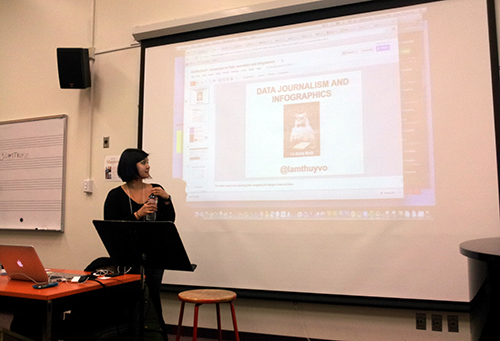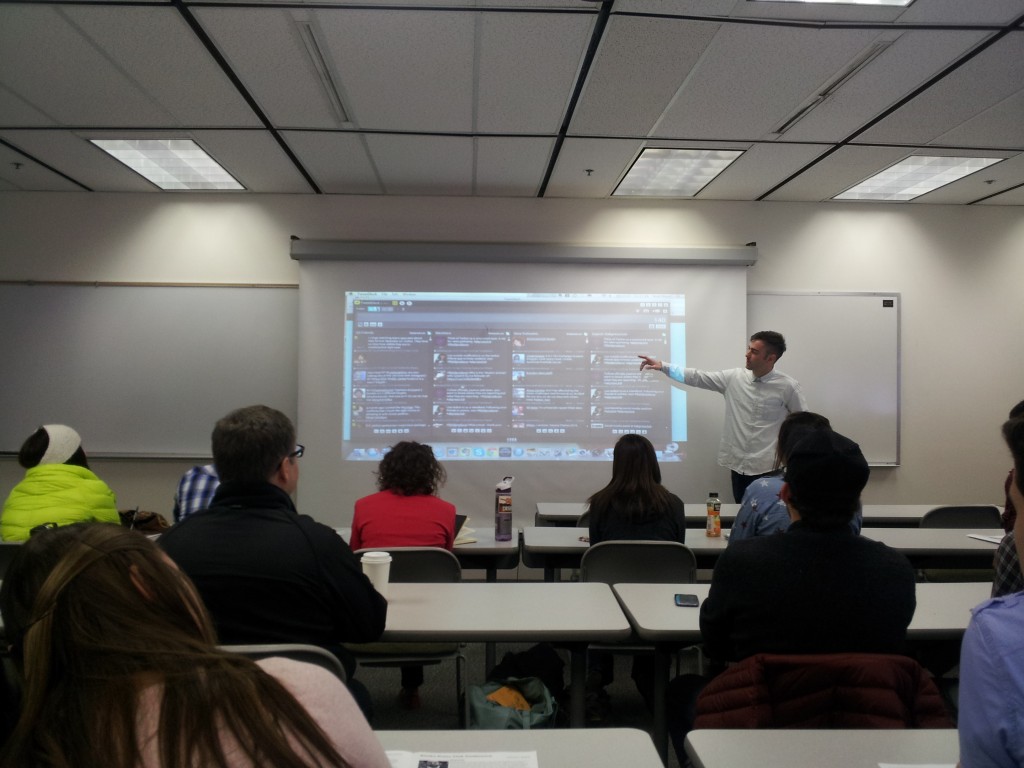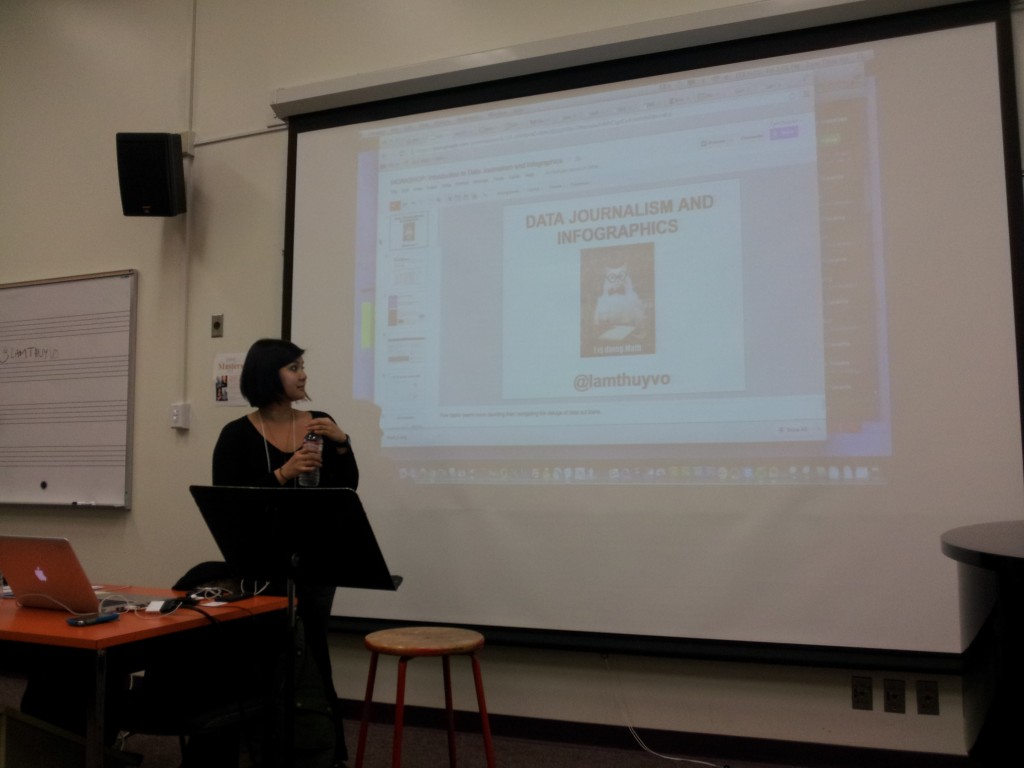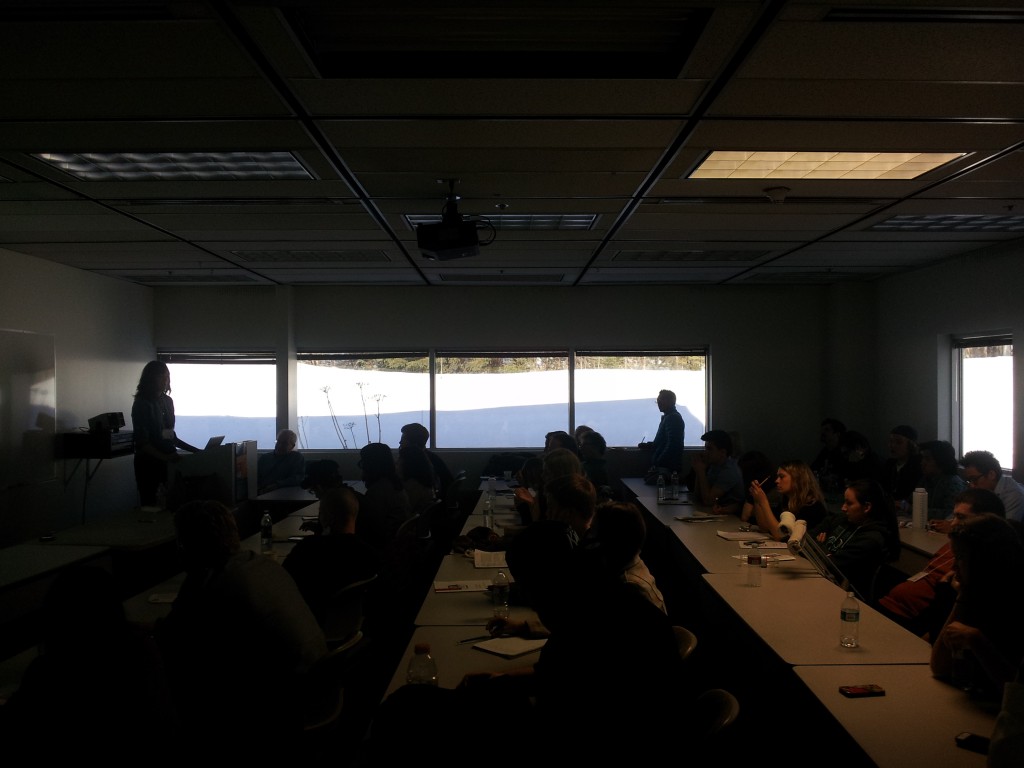
It was great catching up with all the radio peoples on Day 1 of the Alaska Press Club Conference. It was an inspiring night capped off by the traditional yearly trip to Dairy Queen. (Press Club is my yearly excuse for a Snickers Blizzard, though who really needs an excuse for a blizzard right?)
Despite a number of airplane delays, presenters made it to Alaska in time for Day 2’s sessions. Here’s a summary of the sessions I was able to attend:
Social media news gathering – Neal Mann | Social Media editor at the The Wall Street Journal | @fieldproducer
Mann’s presentation mostly focused on how to make Twitter a valuable tool for news gathering.
“You often hear ‘what does Twitter say?’ in newsrooms, but that’s like asking ‘what does the internet say?'”
“What’s amazing is trying to explain Twitter to journalists. If you have a hard time understanding the value of being in touch with people on the ground then you need to take a hard look at communication in the world now.”
“140 characters is a headline. If you’re in news and you can’t say it in a headline, go get another job.”
“No matter what you do, the key thing to understand the ability to push content is huge on social. Social Media gives us the ability to engage with an active audience and let them engage with us.”
“Outlets used to be afraid of letting journalists have their own brand, but now that has become an asset for getting content to the audience. Having a brand is an asset. Having a social media history gives you credibility. Having a brand makes you valuable.”
“In 5-10 years, social media experts shouldn’t exist, because it should be part of the the work flow. It’s just another platform. All journalists should be doing this on their own.”
It’s a place to publish where you engage an audience rather than just publish a story and the audience just comments below. If you’re publishing right, then your audience is engaging with you.
Don’t be afraid to reference other journos and news orgs. People will follow you as a source of good content.
Follow official places, like AP, other journalists and competing news organizations–you want to know where they are reporting and what they are reporting. He adds that you can get notifications (through app) for tweets. Use this on breaking news stories by getting notifications for sources and opposition. Then you know where opposition is and what they’ve seen.
There’s no point on only following people you know or work with. That’s not going to tell you anything you don’t already know.
“New followers are almost as important as a news feed. Lets you take the virtual world and makes it real. If someone follows you and is interesting then message them, make contact and start a relationship. Immediately you have direct contact with someone–a potential source.”
In any major story, most of the content now comes out of social media. News can come across AP’s Twitter feed 20 minutes before it comes across the wire.
How to verify if a Twitter account is legit:
- Is it verified by Twitter? (If it is there will be a little blue check mark next to the handle)
- How old is the account?
- Does it have a lot of tweets? Followers?
Verifying photos on Social Media:
- Does the weather in the background make sense for the time of year?
- Is the photo geo-tagged? Verify with Google Maps
- Use Google Reverse Image search to look the photo up
- Use Topsy to search social media. Use filters to narrow down topics. Really useful if you are going to debunk something.
- When people are trying to get something to news orgs fraudulently, they often drop something over and over again.
Always be skeptical. Always question the content. People are always trying to fool you.
In other social media news, Facebook has lost some value as a news source because of the complex privacy settings and people are still getting a handle on how to make Reddit useful.
Intro to Data visualization and Infographics – Lam Thuy Vo | Multimedia reporter, data journalist and coder for NPR’s Planet Money | @lamthuyvo
The energy in Lam Thuy Vo’s presentations definitely upped the enthusiasm for learning data journalism. While the big D word can scare a lot of math-wary journos, Lam had some great examples of how to make data interesting and relevant.
Here’s her wisdom:
Data visualizations in data journalism are really good for the social web. It’s really shareable.
Data are interviews that someone else conducted for you on a large scale. It’s a really interesting set of questions someone else asked and is a testament of its time
Use data to increase the likelihood of finding the right sources. Use statistics to find interesting places, go there and find your sources.
Use the numbers to bulletproof your story and find the people to make it relatable.
Out of Sight: Out of Mind is a great example (though slightly editorializing) of a conscious effort to find the story within the data. It’s a very great approach to using data without even having to use an article to explain. (The site went viral)
Infographics can be made once on a story that is ongoing and they can help people over time, help you give context in a way a news story can’t.
There is a role in curating data and making it accessible. It’s a public service to take data that’s out there and make it into something that’s accessible and useful. There is a place for a daily data visualization that gets complex information across quickly and in a way that’s easy to understand.
Interactivity is a way to talk in information that doesn’t have to be visible at first but can unfold. Think about why you want it to be interactive. Think about what you use your visualizations for.
How do you start an infographic?
- Know which is good data, bad data and what to use for an infographic.
- Do calculations for yourself. Why would someone do the calculations? What’s their agenda? Ask for source data.
- Ask. Make sure you get the right data.
- Talk to experts to know what to do with your data, understand what it means.
- Data log: The steps for how you manipulate the data. Never manipulate your raw data. Make a copy. If you don’t keep track of what you’ve done, it’s going to bite you in the butt.
See the full day’s notes here.
*NOTE: I did attend Ann Friedman’s session on personal branding, but the room was so packed I had to listen from the hall. I’m talking with some savvy journos who made it in time for seats and will add their notes to this post when I get them.
Update: Jeremia Schrock and Andrew Sheeler kindly lent me their notes and audio and here’s the details on Ann Friedman’s Panel.
Branding 101 – Ann Friedman | Columnist and Editor | @annfriedman
“It’s important to ‘promote oneself without it seeming like you are.”
There is a conflict for people who work for a news company. They are torn between representing themselves vs. the company they are working for.
“I felt liberated to be myself on the internet.”
“Journalists are their best marketers.”
“How did I set out to make my personal brand? I didn’t.”
But, over time, Friedman realized there are two things that are very important in order to developing your brand.
Step 1: Love yourself (As Friedman said, this was her “Oprah moment”)
Step 2: Love your work.
“No one is going to hype yourself for you…you have to hype yourself.”
In actually developing your brand, there are four important things to remember.
- Articulate who you are and what you do…AND why you do it.
- All of that…put that on a website.
- Get into social media and talk about your work (before, during, and after a project!). Pick one or two social media platforms and commit to them!
- Stop waiting around and make interesting things now!
Make sure…have a why for what you do!
Remember: On social media, be ‘personable’ not necessarily ‘personal.’ It is important to share yourself,
but you don’t have to share everything. Friedman herself has a Twitter feed that she only uses when she
drunk and she tells NO ONE about it.
For me, Lam’s presentation was very inspiring because data curation is a big part of Alaska Media Lab’s goals. Stay tuned for more on that, but you can be looking forward to some very exciting data and data visualization announcements coming soon.



